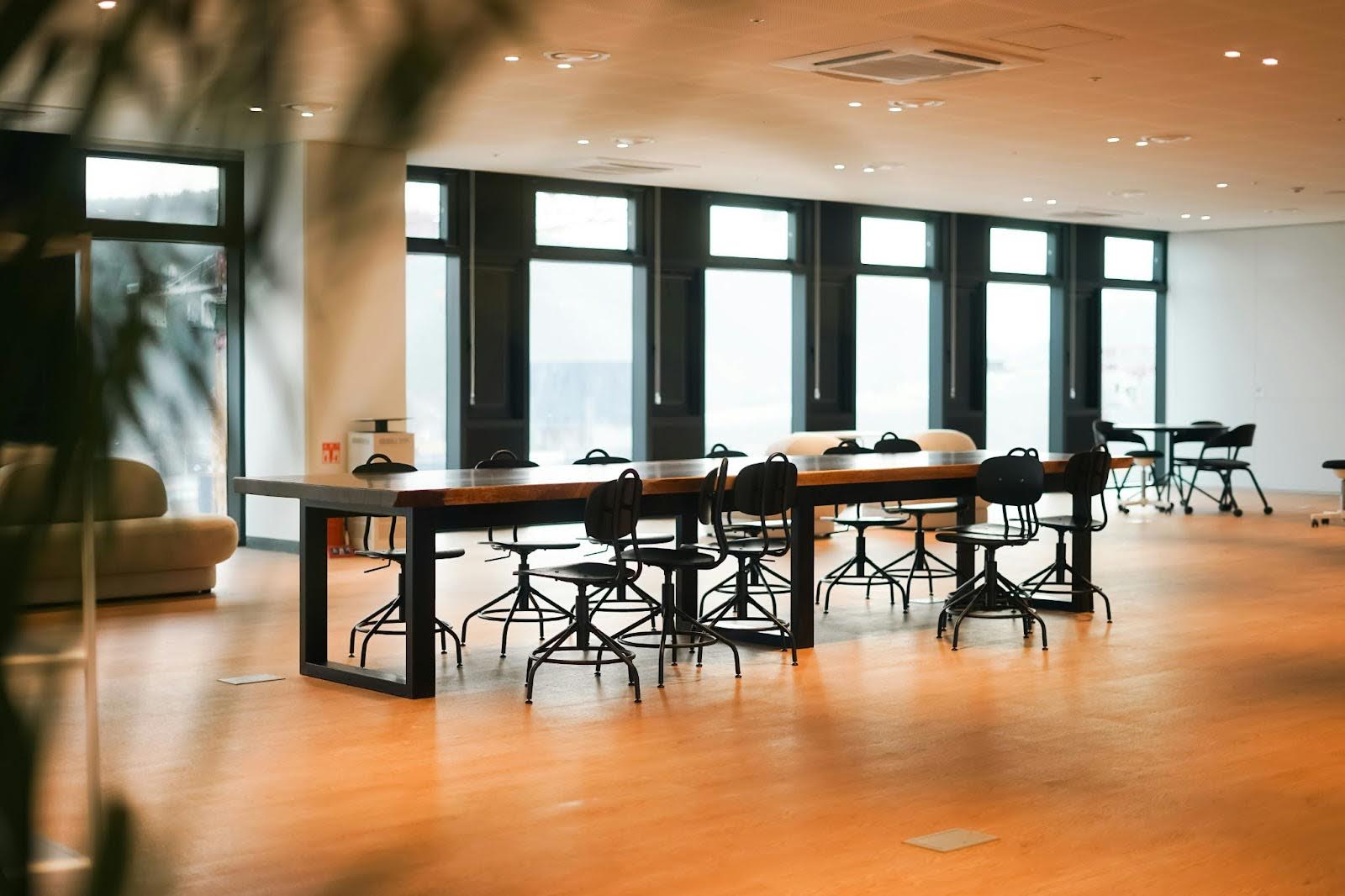
The way an office is designed can have a huge impact on how employees feel and perform at work. From the layout to the lighting, every detail influences productivity, collaboration, and even creativity. A well-thought-out corporate office design not only helps staff work efficiently but also leaves a positive impression on clients and visitors.
Whether you are setting up a brand-new workspace or looking to refresh your current one, here are 27 ideas to inspire you:
1. Use Natural Light
Natural light is one of the most effective ways to boost productivity and improve workplace morale. Employees who work in well-lit spaces often report higher energy levels and better focus throughout the day. Large windows, glass partitions, and skylights can help flood your office with daylight, while keeping artificial lighting to a minimum during working hours.
Position desks near windows to give staff access to both light and views, and avoid heavy curtains that block out sunshine.
2. Open Layouts for Collaboration
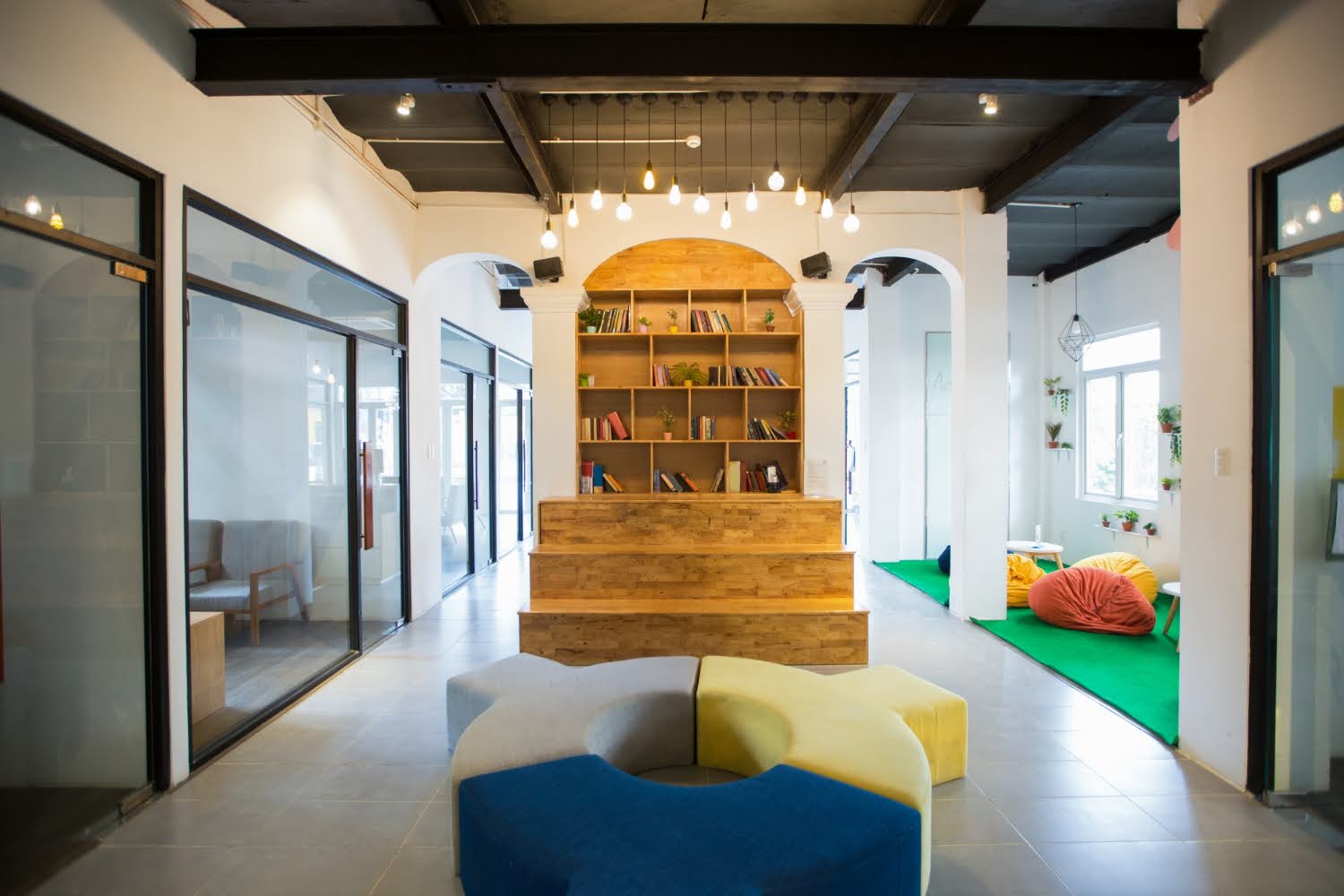
An open-plan layout can break down barriers and make it easier for employees to connect.
With fewer walls and partitions, communication flows more naturally, encouraging teamwork and spontaneous idea sharing. To make open spaces work, ensure there’s still enough distance between workstations to avoid excessive noise. Adding casual meeting corners or lounge areas within an open space can also help promote collaboration without formalities.
3. Dedicated Quiet Zones
While open layouts are great for teamwork, some tasks demand uninterrupted focus. Quiet zones, such as private booths, enclosed rooms, or even soundproof pods, give employees a place to concentrate without distractions.
These spaces can also be ideal for making confidential calls or working on sensitive projects. Providing both collaborative and quiet areas ensures your office meets the needs of all working styles.
4. Ergonomic Furniture
Ergonomics directly affects comfort, posture, and long-term health. Invest in adjustable chairs with proper lumbar support, height-adjustable desks, and monitor stands that promote healthy screen positioning.
Ergonomic furniture can reduce strain on the body, minimise fatigue, and help employees maintain productivity throughout the day. This investment also signals that you value staff wellbeing.
5. Breakout Spaces
Breakout spaces are informal zones where employees can relax, socialise, or brainstorm ideas. Unlike formal meeting rooms, these areas are designed for flexibility and comfort, often featuring sofas, beanbags, or armchairs. They offer a refreshing change of scenery from the desk and can spark creativity during casual conversations.
6. Greenery and Plants
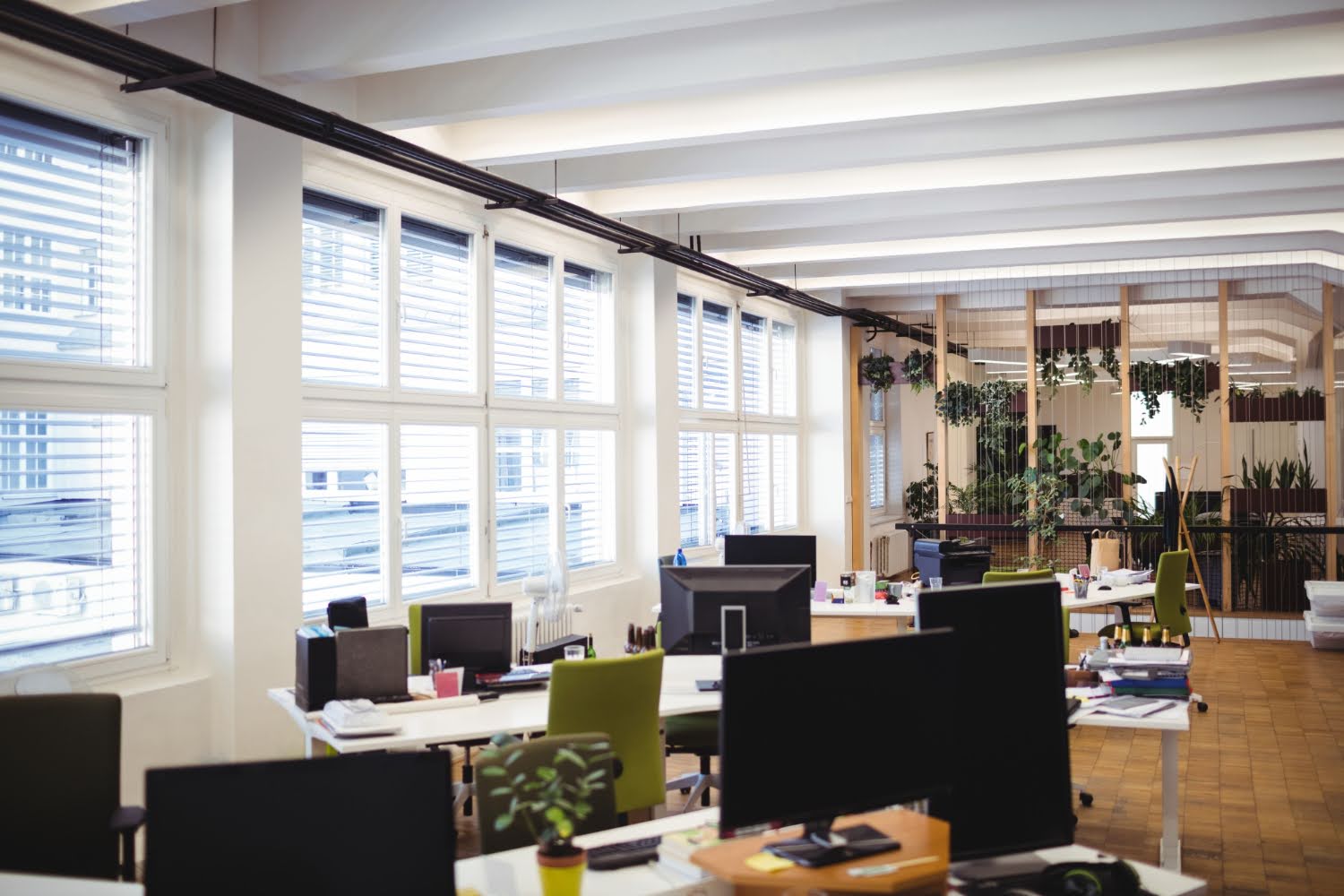
Adding plants to your office is one of the easiest ways to make it feel welcoming and vibrant. Plants not only improve air quality but also have a calming effect, reducing stress levels and increasing focus.
From small desk plants to large potted trees, greenery softens the look of an office and makes it more inviting for both employees and visitors.
7. Colour Psychology
Colour has a powerful influence on how people feel and behave. Blues and greens can create a calm, focused environment, while yellows and oranges bring energy and creativity to a space.
Neutral colours provide balance and professionalism, while accents of bold colours can draw attention to specific areas. Choosing the right palette can help set the tone for your office.
8. Acoustic Solutions
Noise can be one of the biggest productivity killers in an office. To combat this, incorporate sound-absorbing panels, carpets, and curtains that help dampen sound. Plants, bookshelves, and soft furnishings also contribute to better acoustics. The goal is to reduce background noise so employees can work without constant distractions.
9. Smart Storage
Clutter can make a workspace feel chaotic and overwhelming. Smart storage solutions such as built-in cabinets, under-desk drawers, and vertical shelving help keep everything organised and out of sight. When employees can find what they need quickly and have clear desks to work on, they’re able to concentrate better.
10. Branding in the Design
Bringing your brand into the design of your office creates a sense of identity and pride. Incorporate your company colours into furniture or feature walls, display your logo subtly, and use decor that reflects your brand’s values. This not only boosts staff connection to the company but also makes a strong impression on visitors and clients.
11. Wellness Rooms
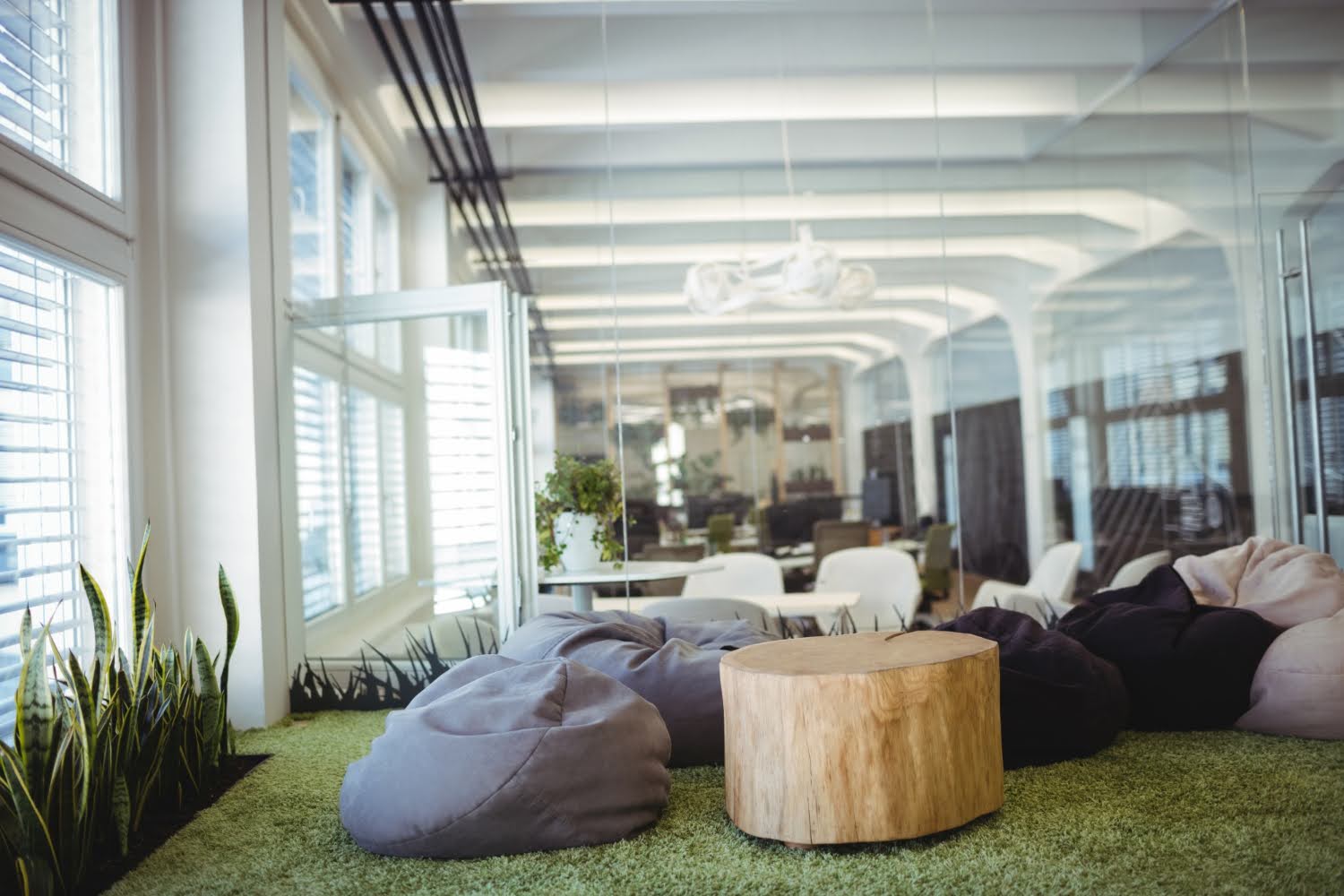
A wellness room is a quiet retreat where staff can take a moment to relax, stretch, or meditate. Equipped with soft lighting, comfortable seating, and calming decor, these rooms can help employees recharge during a busy day. Providing such spaces shows a genuine commitment to mental and physical wellbeing.
12. Flexible Workstations
Not all employees thrive in the same setting every day. Flexible workstations allow people to choose where they work based on the task or mood. This can include hot-desking areas, standing desks, or mobile furniture that can be rearranged easily. The adaptability of these spaces keeps the work environment fresh and dynamic.
13. Inspiring Wall Art
Decorating walls with inspiring art, photography, or murals can boost creativity and create a positive atmosphere. You might feature motivational quotes, abstract designs, or work from local artists. Wall art can also double as a branding tool, reinforcing your company’s identity in a visually appealing way.
14. Tech-Friendly Design
In a modern office, technology integration is essential. Ensure there are plenty of power outlets, USB ports, and charging stations throughout the office.
Cable management systems keep wires tidy, while dedicated areas for video conferencing ensure a smooth virtual meeting experience. A tech-friendly layout supports efficiency and prevents workflow interruptions.
15. Adjustable Lighting
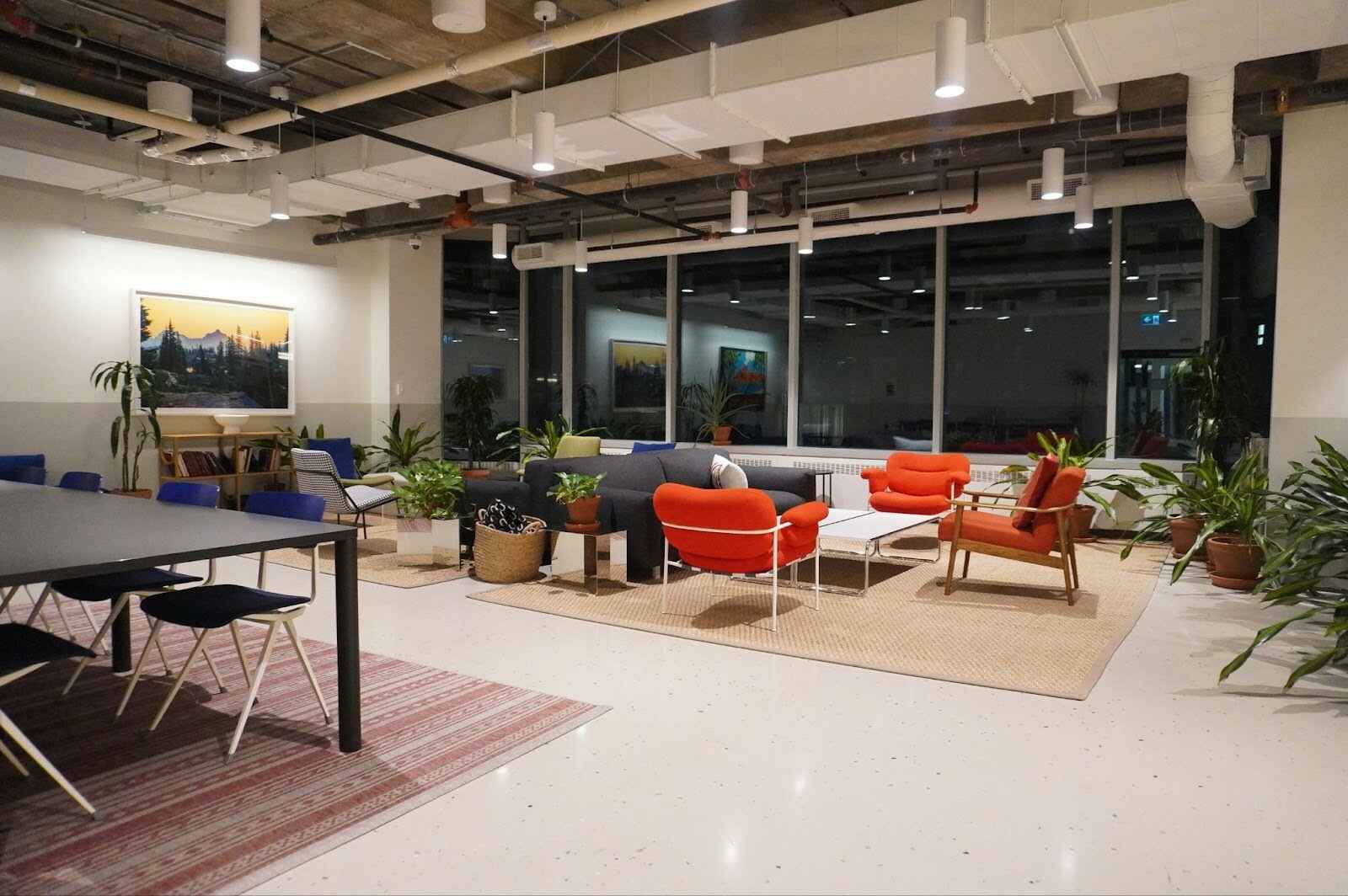
Lighting affects both comfort and productivity. Adjustable lighting systems allow employees to customise their work environment according to their needs. Task lighting helps with precision work, while dimmable overhead lighting can be adjusted for different times of day. Natural-toned LEDs reduce eye strain compared to harsh white lights.
16. Multi-Use Meeting Rooms
Meeting rooms don’t need to be limited to one purpose. With movable furniture, foldable tables, and adaptable technology, a meeting room can easily be converted for presentations, workshops, or informal team sessions. This makes the most of available space while supporting different work activities.
17. Sustainable Materials
Choosing eco-friendly materials such as reclaimed wood, bamboo, or recycled metal benefits both the environment and your brand image. Sustainable design choices often come with a natural aesthetic that adds warmth to an office. It’s a practical way to align your workspace with modern environmental values.
18. Office Pantry Upgrade
A thoughtfully designed pantry is more than just a place for coffee and snacks. The right office pantry design can encourage casual conversations, collaboration, and team bonding. Comfortable seating, clean counters, and good lighting turn the pantry into a space employees genuinely enjoy using.
19. Wellness-Focused Furniture
Furniture designed with health in mind can improve posture, prevent strain, and keep employees feeling energised. Options like standing desks, active seating, or footrests encourage movement throughout the day, which supports long-term well-being and productivity.
20. Personalisation Options
Giving employees the freedom to add small personal touches to their work area can make them feel more comfortable and connected. This could be family photos, plants, or small decorative items. Personalisation helps create a sense of ownership and pride in the workspace.
21. Integrated Break Areas
Instead of having one large break room, consider creating smaller break spots throughout the office. These could be cosy corners with armchairs, coffee tables, and soft lighting. Having multiple options allows employees to take a quick pause without going far from their work area.
22. Artisanal or Local Touches
Incorporating locally made furniture, decor, or art gives your office a distinctive look while supporting the community. These unique pieces often become conversation starters and can add a sense of authenticity and character to the workplace.
23. Technology Zones
Designating specific areas for technology-heavy work ensures the rest of the office remains free from unnecessary noise and disruption. These zones can include video conferencing rooms, multimedia editing spaces, or collaboration hubs equipped with screens and digital tools.
24. Celebrating the Evolution of Work
Designing with the evolution of office spaces in mind means blending traditional elements with modern flexibility. You might have formal desks alongside lounge-style seating, or private rooms alongside open collaboration zones. This mix caters to a variety of working preferences.
25. Reception that Makes an Impression
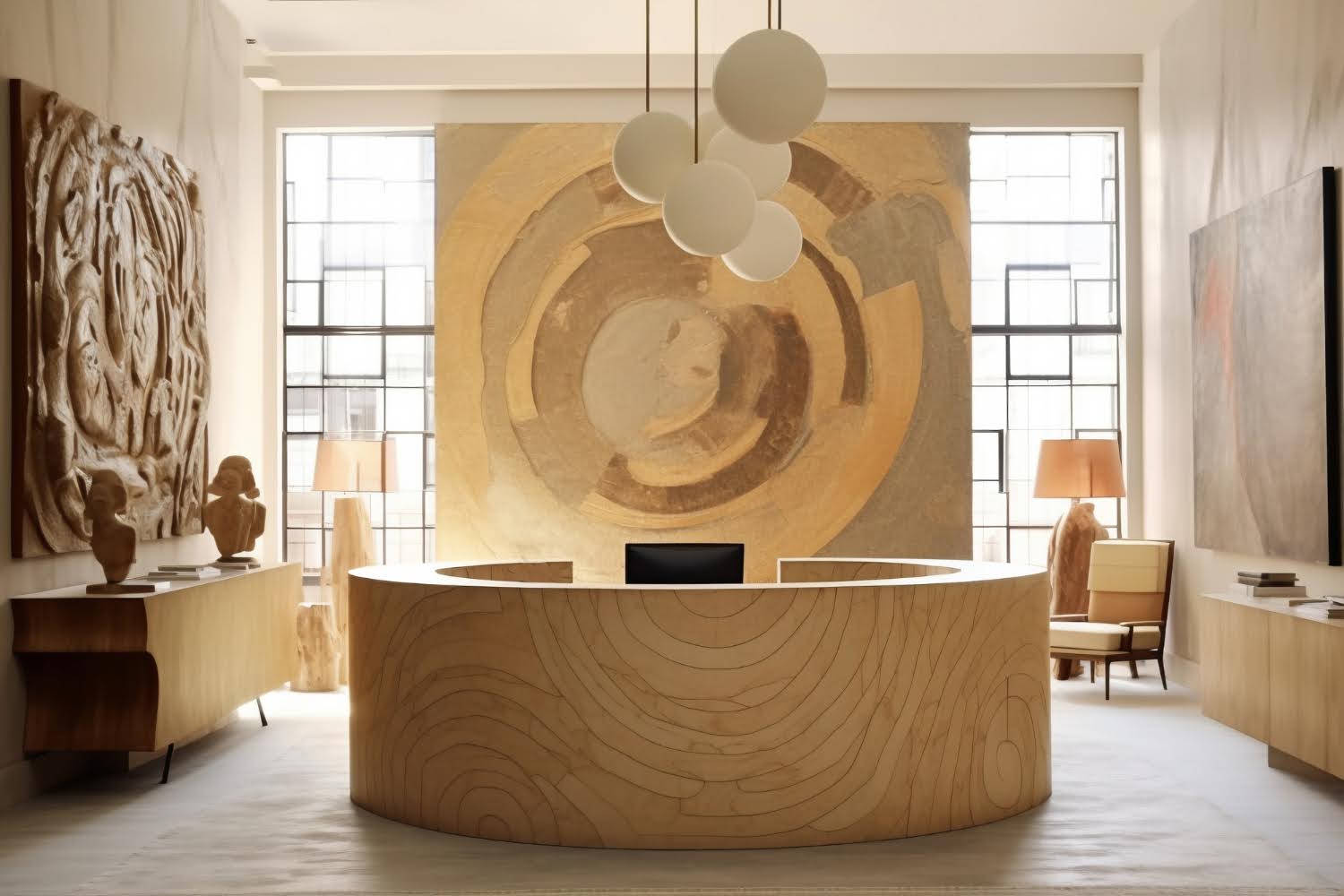
Your reception is the first experience visitors have of your company. A warm, well-designed space with comfortable seating, branded signage, and thoughtful lighting sets the tone for professionalism and hospitality.
26. Commercial Design Inspiration
Looking at commercial office design ideas from other industries can help you think creatively about your own space. You might discover unique layout options, furniture styles, or decorative features that could work well in your office environment.
27. Small Space Solutions
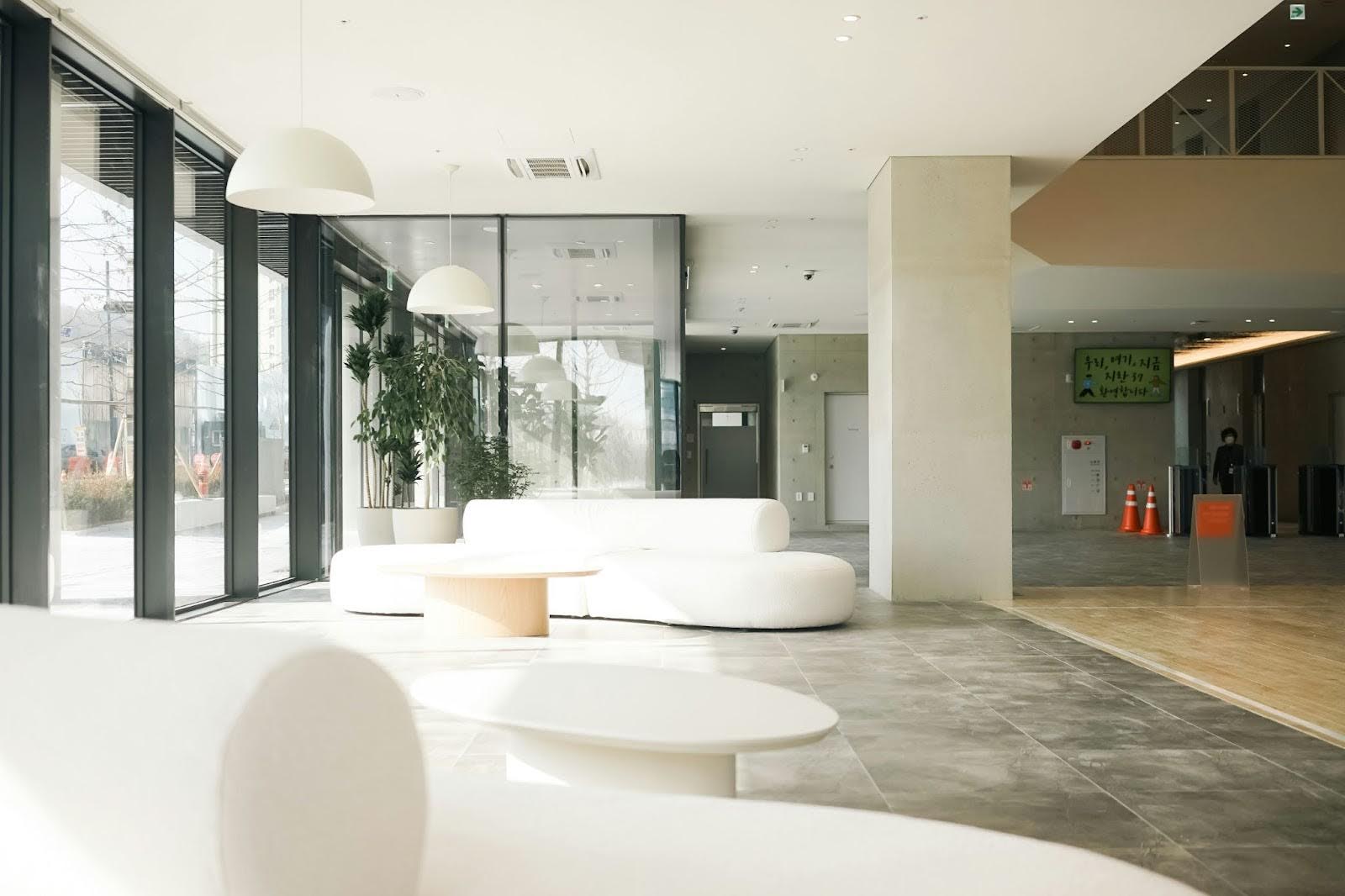
When working with limited space, efficiency is everything. Glass partitions keep areas open and bright, vertical storage maximises capacity, and compact furniture helps maintain comfort without clutter. These principles also align with small office design ideas, making them adaptable to businesses of various sizes.
Conclusion on Corporate Office Design
A productive corporate office is created with intention. From light and layout to furniture and function, every design choice contributes to how employees work and feel. By considering these 27 ideas, you can create a space that not only boosts productivity but also reflects your company’s culture and values.
If you’re ready to bring your ideal workspace to life, Yangs Design Associates can guide you through the process with expertise and creativity.
Contact us now to design an office that inspires your team and impresses your clients.
Frequently Asked Questions About Corporate Office Design
What Are the Key Elements of a Productive Office Design?
Natural light, ergonomic furniture, and a balanced mix of collaborative and quiet spaces are essential for productivity.
How Can Colour Affect Office Productivity?
Colours can influence mood and energy levels. Cool tones like blue promote focus, while warm tones like yellow can boost creativity.
What Is the Benefit of Open-Plan Offices?
They encourage communication and teamwork, though they should be balanced with quiet zones to reduce distractions.
How Do You Maximise Space in a Small Office?
Use multifunctional furniture, vertical storage, and light colours to make the most of limited square footage.
Why Is Branding Important in Office Design?
Branding reinforces company culture, creates a sense of belonging for employees, and leaves a lasting impression on visitors.

